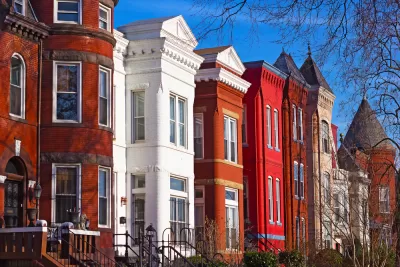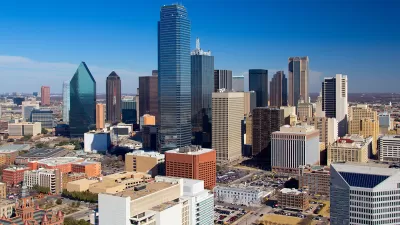Despite a downtown construction boom, housing is still scarce across the Capital Region. And nearly two-thirds of new homes built since the year 2000 have been single-family structures.

According to a new report, the greater Washington D.C. region gained almost twice as many people as units of housing over the past 20 years. "Despite the flurry of cranes in downtown Washington," the authors write for Brookings, "the exurban jurisdictions collectively have built more than twice as many housing units as the region's inner core."
Since 2000, almost two-thirds of new homes constructed have been single-family structures, including rowhouses. That has a variety of negative effects, including increased traffic congestion throughout the region and a heavy impact on the environment.
It's also the case that "housing values in the Capital Region have been rising faster than incomes for most of the last 20 years, with a brief respite during the Great Recession [...] Perhaps not surprisingly, the Capital Region has some of the highest home values relative to income in the country."
Worsening affordability detriments the region's economy as a whole. "Employers in high-cost regions have difficulty attracting and retaining workers, especially younger workers who are more likely to be renters," the authors write. Commuters also lose valuable time stuck in traffic, and low-income households feel the effects first.
FULL STORY: The Capital Region needs more housing

Study: Maui’s Plan to Convert Vacation Rentals to Long-Term Housing Could Cause Nearly $1 Billion Economic Loss
The plan would reduce visitor accommodation by 25,% resulting in 1,900 jobs lost.

North Texas Transit Leaders Tout Benefits of TOD for Growing Region
At a summit focused on transit-oriented development, policymakers discussed how North Texas’ expanded light rail system can serve as a tool for economic growth.

Using Old Oil and Gas Wells for Green Energy Storage
Penn State researchers have found that repurposing abandoned oil and gas wells for geothermal-assisted compressed-air energy storage can boost efficiency, reduce environmental risks, and support clean energy and job transitions.

Private Donations Propel Early Restoration of Palisades Playground
Los Angeles has secured over $1.3 million in private funding to restore the Pacific Palisades playground months ahead of schedule, creating a modern, accessible space that supports community healing after recent wildfires.

From Blight to Benefit: Early Results From California’s Equitable Cleanup Program
The Equitable Community Revitalization Grant (ECRG) program is reshaping brownfield redevelopment by prioritizing projects in low-income and environmental justice communities, emphasizing equity, transparency, and community benefits.

Planting Relief: Tackling Las Vegas Heat One Tree at a Time
Nevada Plants, a Las Vegas-based nonprofit, is combating the city’s extreme urban heat by giving away trees to residents in underserved neighborhoods, promoting shade, sustainability, and community health.
Urban Design for Planners 1: Software Tools
This six-course series explores essential urban design concepts using open source software and equips planners with the tools they need to participate fully in the urban design process.
Planning for Universal Design
Learn the tools for implementing Universal Design in planning regulations.
Ascent Environmental
Borough of Carlisle
Institute for Housing and Urban Development Studies (IHS)
City of Grandview
Harvard GSD Executive Education
Toledo-Lucas County Plan Commissions
Salt Lake City
NYU Wagner Graduate School of Public Service





























